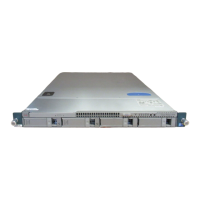Before You Begin
•
Know that the vlan dot1q tag native global command changes the behavior of all native VLAN ID
interfaces on all trunks on the device.
•
Know that this feature applies to the entire device; you cannot apply it to selected VLANs on a device.
•
Know that the Cisco Nexus 1000V commands may differ from the Cisco IOS commands.
If you enable 802.1Q tagging on one device and disable it on another device, all traffic is dropped on the
device with this feature disabled. You must configure this feature identically on each device.
Note
Procedure
PurposeCommand or Action
Enters global configuration mode.switch# configure terminal
Step 1
Modifies the behavior of a 802.1Q trunked native VLAN ID
interface in the running configuration. The interface maintains
switch#(config) vlan dot1q tag
native
Step 2
the taggings for all packets that enter with a tag that matches
the value of the native VLAN ID and drops all untagged
traffic. The control traffic is still carried on the native VLAN.
The default is disabled.
(Optional)
Displays the status and information of VLANs.
switch(config-if)# show vlan
Step 3
(Optional)
Saves the change persistently through reboots and restarts by
copying the running configuration to the startup configuration.
switch(config-if)# copy
running-config startup-config
Step 4
This example shows how to change the behavior of the native VLAN on an 802.1Q trunked interface to
maintain the tagged packets and drop all untagged traffic (except control traffic):
switch# configure terminal
switch(config)# vlan dot1q tag native
switch(config-if)#
Verifying the Interface Configuration
Use one of the following commands to verify the access and trunk interface configuration information:
PurposeCommand
Displays the interface configuration.
show interface ethernet slot/port [ brief |
capabilities | counters | mac-address | status |
switchport | trunk]
Cisco Nexus 1000V for VMware vSphere Interface Configuration Guide, Release 5.x
31
Configuring Layer 2 Interfaces
Verifying the Interface Configuration

